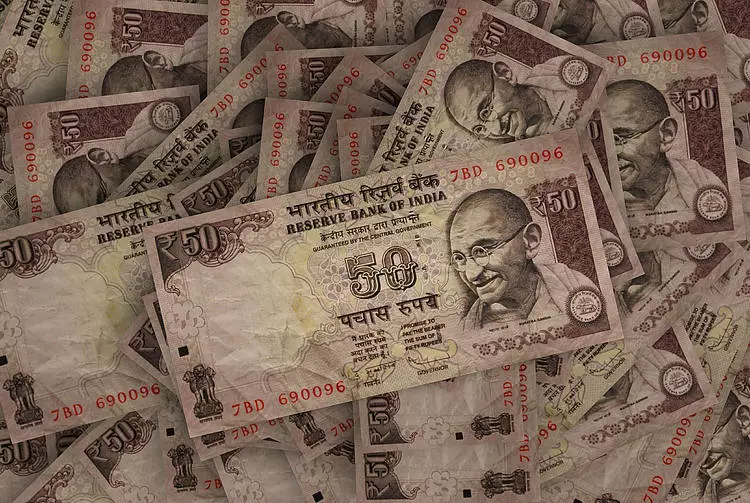The Indian Rupee (INR) is currently facing a complex set of challenges that have collectively led to significant fluctuations in its value, particularly against the US Dollar (USD). After hitting an all-time low in the previous session, the currency has steadied somewhat during Wednesday’s trading session. However, the underlying factors contributing to its depreciation are still very much in play. Disappointing GDP data and persistent foreign fund outflows underscore a bearish sentiment surrounding the rupee. As the USD continues to strengthen, there seems to be little immediate relief in sight for India’s currency.
The Indian economy has been beleaguered by slower-than-expected growth rates, which compromise investor confidence. Furthermore, the recent comments by various Federal Reserve officials suggest an intricate balancing act that could influence not just the USD but also emerging market currencies like the INR. The anticipation of significant economic reports, including the HSBC India Services Purchasing Managers Index (PMI), adds another layer of complexity to how investors are approaching the rupee.
India’s economic performance, as reflected by its Gross Domestic Product (GDP), has not inspired much confidence lately. The sluggish growth rate impacts not just domestic markets but also influences global perceptions of India as an investment destination. A weak GDP growth projection indicates slower consumption and investment, which are critical components for macroeconomic stability. As foreign investors reassess their positions in light of these developments, capital outflows have intensified, further putting downward pressure on the INR.
Market analysts have indicated a keen interest in the forthcoming PMI report to gauge whether the services sector can provide any momentum back into the economy. A positive surprise could momentarily bolster the INR and provide respite from its recent woes. Nonetheless, the outlook continues to remain cautious, driven by the larger economic picture.
The role of the Reserve Bank of India (RBI) cannot be overstated in these turbulent times. The central bank has been actively involved in stabilizing the INR through direct market interventions, primarily involving the selling of USD. Such actions are aimed at curbing extreme volatility and promoting a more stable trading environment. While these interventions can provide temporary relief, they must be coupled with strategies that address more intrinsic economic challenges.
Additionally, the RBI’s monetary policy decisions are paramount. A focus on maintaining an inflation target of around 4% necessitates a delicate calibration of interest rates. Higher interest rates can attract foreign capital, leading to an appreciation of the rupee. However, if inflation remains uncontrollable and outpaces the growth in GDP, the RBI will face an uphill battle in maintaining currency stability.
The value of the INR is particularly sensitive not just to domestic economic conditions but also to external factors such as global oil prices and the strength of the USD. As a country heavily reliant on imported crude oil, fluctuations in oil prices have a direct impact on the trade balance and, consequently, the rupee’s valuation.
Furthermore, the nature and direction of foreign investments play a crucial role. A favorable economic climate can stimulate inflows, which in turn drive up the demand for the INR. Conversely, negative sentiments—either due to rising inflation or relatively unattractive yields compared to other countries—can lead to significant capital flight.
The monetary policy decisions of the US Federal Reserve have global implications as well. Statements from officials such as Jerome Powell suggest that economic recalibration is ongoing, indicating a mix of both caution and opportunity. The interplay between US monetary policy and its impact on capital flows to India can complicate forecasts for the INR.
Looking ahead, the outlook for the Indian Rupee is contingent upon a shift in the aforementioned dynamics. For any sustainable recovery to occur, structural reforms will need to be prioritized to stimulate economic growth. Strengthening the manufacturing sector, enhancing infrastructure, and improving the ease of doing business must be focal points in India’s economic agenda.
While immediate actions, such as market interventions and monetary policy adjustments, can provide short-term stabilization, long-term solutions must also be implemented for the Indian economy to regain a resilient trajectory. A constructive environment for investment, coupled with proactive governance measures, could ultimately provide the INR with the stability it desperately needs.
The Indian Rupee’s journey through these tumultuous times requires both vigilance and responsive measures on multiple fronts. While challenges abound, proactive policy interventions can pave the way to a more stable and robust currency in the future.

